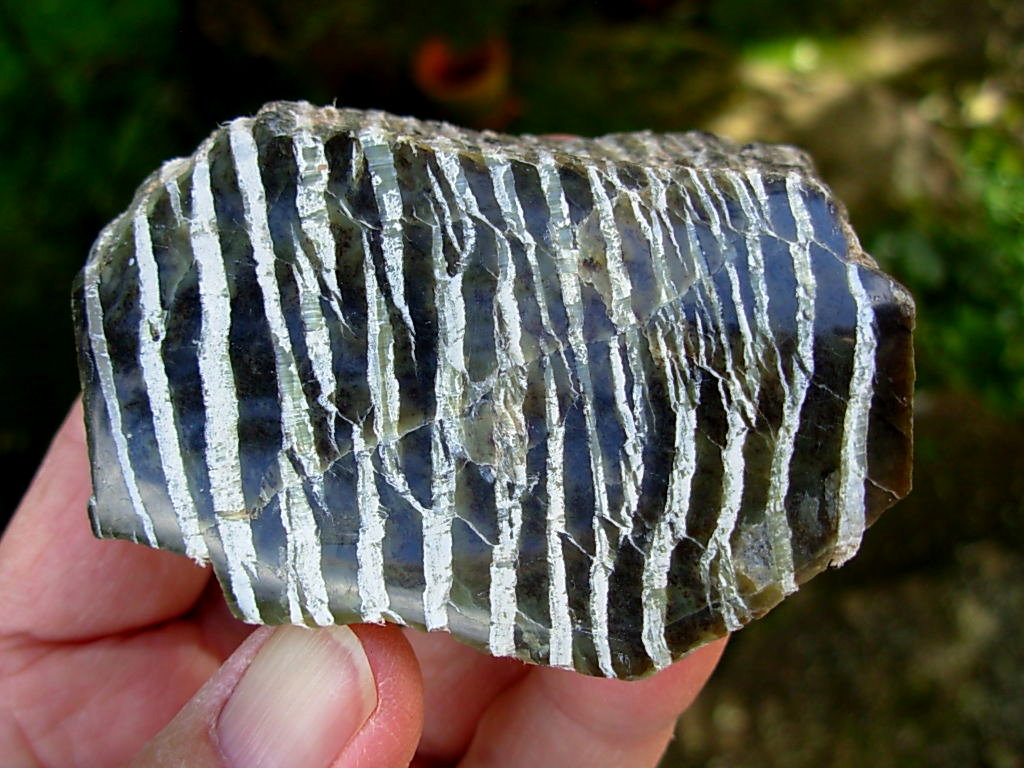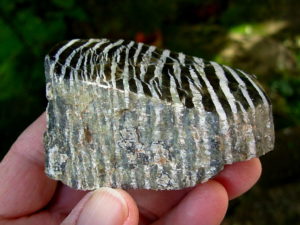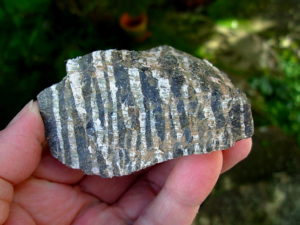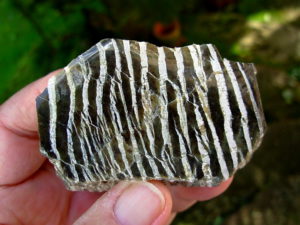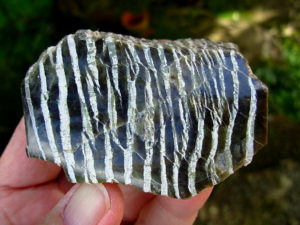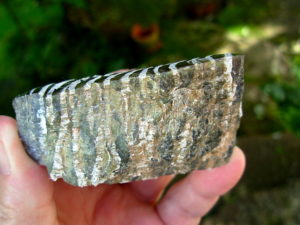Serpentine var. Ribbonstone
The serpentine group describes a group of common rock-forming hydrous magnesium iron phyllosilicate minerals; they may contain minor amounts of other elements including chromium, manganese, cobalt or nickel. In mineralogy and gemology, serpentine may refer to any of 20 varieties belonging to the serpentine group. Owing to admixture, these varieties are not always easy to individualize, and distinctions are not usually made. There are three important mineral polymorphs of serpentine: antigorite, chrysotile and lizardite.
The serpentine group of minerals are polymorphous, meaning that they have the same chemical formula, but the atoms are arranged into different structures, or crystal lattices. Chrysotile, which has a fibrous habit, is one polymorph of serpentine and is one of the more important asbestos minerals. Other polymorphs in the serpentine group may have a platy habit. Antigorite and lizardite are the polymorphs with platy habit.
Many types of serpentine have been used for jewelry and hardstone carving, sometimes under the name false jade or Teton jade.
Most serpentines are opaque to translucent, light (specific gravity between 2.2–2.9), soft (hardness 2.5–4), infusible and susceptible to acids. All are microcrystalline and massive in habit, never being found as single crystals. Lustre may be vitreous, greasy or silky.
Colors range from white to grey, yellow to green, and brown to black, and are often splotchy or veined. Many are intergrown with other minerals, such as calcite and dolomite. Occurrence is worldwide; New Caledonia, Canada (Quebec), US (northern California, Rhode Island, Connecticut, Massachusetts, Maryland and southern Pennsylvania, Afghanistan, Britain (the Lizard peninsula in Cornwall), Ireland, Greece (Thessaly), China, Russia (Ural Mountains), France, Korea, Austria (Styria and Carinthia), India (Assam, and Manipur), Myanmar (Burma), New Zealand, Australia, Norway and Italy are notable localities.
Item # SERPRIB09171232K49
Serpentine var. Ribbonstone from Australia

Here's an excellent polished face multi banded formation Serpentine var. Ribbonstone in zebra-like black and white layers. The white bands take on a pearlescent appearance under sunlight when the piece is moved and viewed from the correct angle (similar to the way labradorite shows color). This is a very unique specimen from Australia.
Specimen weighs 6.46 oz or 0.4 lbs (183g) and measures 2.9 x 1.7 x 1.6 inches (7.3 x 4.4 x 4.1cm)

